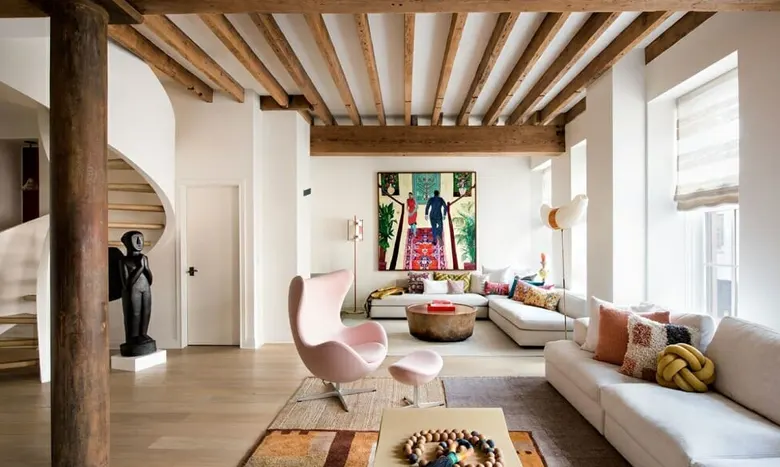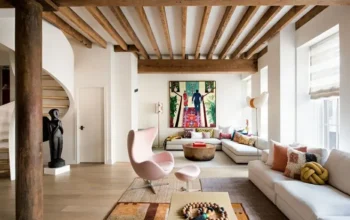A home is more than just four walls—it is a personal sanctuary that reflects the lifestyle, preferences, and values of its occupants. Every detail, from the color of the walls to the placement of furniture, contributes to the way a home feels and functions. This is where the discipline of residential interior design comes into play, combining aesthetics with practicality to transform ordinary spaces into harmonious living environments.
What Is Residential Interior Design?
Residential interior design focuses on creating functional, comfortable, and visually appealing interiors for private homes. Unlike commercial or industrial spaces, the emphasis here is on tailoring each design to suit the needs and personalities of the residents. It is an art form that balances style with usability, ensuring that every room is both beautiful and livable.
Key Principles of Residential Design
Personalization
A central principle of designing residential spaces is personalization. Each household has its own routines, priorities, and tastes. A well-executed design reflects these aspects, turning a house into a true home.
Balance Between Aesthetics and Function
A visually stunning room that lacks comfort or practicality will quickly lose its appeal. Residential design prioritizes layouts, furniture choices, and features that enhance everyday living.
Cohesive Flow
The design of one room should complement the rest of the home. Using consistent color schemes, materials, and styles creates a unified atmosphere, while still allowing room for individuality in each space.
Efficient Use of Space
Particularly in urban environments, where homes may be compact, residential design emphasizes maximizing functionality without sacrificing beauty. Smart storage solutions and multi-purpose furniture are often key.
Core Elements of Residential Interior Design
1. Color and Lighting
Color influences mood and atmosphere. Warm tones often evoke coziness, while cooler shades can make a room feel spacious and calm. Lighting, both natural and artificial, plays a critical role in shaping these effects.
2. Furniture and Layout
The arrangement of furniture affects traffic flow, comfort, and usability. Designers prioritize layouts that are intuitive, ensuring that each piece contributes to both function and aesthetic appeal.
3. Materials and Textures
Incorporating a variety of materials—wood, stone, fabrics—adds depth and character to interiors. Textures enhance the tactile experience of a space, making it more inviting.
4. Décor and Accessories
Decorative items, artwork, and accessories bring personality to a space. While they are often subtle, their placement and selection significantly influence the overall feel of the home.
Benefits of Thoughtful Residential Design
- Comfort: A home designed with care promotes relaxation and well-being.
- Efficiency: Practical layouts and functional furniture improve daily living.
- Aesthetic Appeal: A beautiful home uplifts mood and creates pride of ownership.
- Long-Term Value: Well-designed spaces can increase property value.
- Adaptability: Designs can evolve with changing family needs over time.
Trends in Modern Residential Design
Open-Concept Living
Walls are being replaced by open layouts that encourage connection between spaces, particularly in living, dining, and kitchen areas.
Minimalism with Warmth
Simplicity remains popular, but with added warmth through natural materials, muted tones, and cozy textures.
Smart Home Integration
Technology is seamlessly integrated into residential design, from automated lighting systems to energy-efficient appliances.
Sustainability
Eco-friendly materials, energy-conscious designs, and sustainable practices are increasingly shaping modern interiors.
Biophilic Design
Bringing nature indoors through plants, natural light, and organic materials enhances both aesthetics and well-being.
Challenges in Residential Interior Design
While rewarding, residential design comes with its challenges:
- Balancing Wants and Needs: Residents may have aesthetic preferences that conflict with practical considerations.
- Budget Constraints: Achieving a desired look while staying within financial limits requires creativity and compromise.
- Evolving Lifestyles: Designs must adapt to changing family structures, such as children growing up or elderly relatives moving in.
- Space Limitations: Particularly in city apartments, making the most of smaller spaces requires careful planning.
Designing Different Areas of the Home
Living Room
Often the centerpiece of a home, the living room should balance comfort and sociability. Seating arrangements, lighting, and entertainment features play vital roles here.
Kitchen
The heart of many homes, kitchens benefit from functional layouts such as the “work triangle” that enhances efficiency. Storage and durable materials are critical.
Bedrooms
These private spaces prioritize rest and relaxation. Soft lighting, comfortable bedding, and soothing color palettes create the desired atmosphere.
Bathrooms
Functionality and hygiene take precedence, but modern bathrooms often double as personal retreats with spa-like features.
Outdoor Areas
Balconies, patios, or gardens extend living spaces outdoors, offering opportunities for relaxation and gatherings.
Residential Design as a Reflection of Lifestyle
Every design tells a story. For families, homes often center around shared spaces, play areas, and durability. For individuals or couples, designs may lean more toward personal expression, hobbies, or entertaining guests. This flexibility is what makes residential interior design so deeply personal and meaningful.
Conclusion
Residential interior design is not just about creating visually appealing spaces—it is about shaping environments that nurture comfort, efficiency, and individuality. Whether through the choice of colors, the arrangement of furniture, or the integration of natural elements, thoughtful design has the power to transform everyday living.
As trends evolve and lifestyles change, the essence of residential design remains the same: to create homes that truly feel like home. By blending aesthetics with functionality, designers help residents build spaces that inspire, comfort, and endure.




